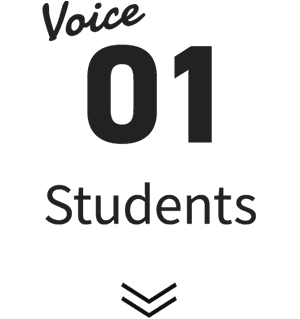On this occasion, our partner, the Aichi Prefectural Government
(International Affairs Division, Policy Planning Bureau), provided us with the task of "proposing the perfect trip to Aichi,"
with the aim of conveying the appeal of the area to foreign visitors.
The students held online discussions with Arizona State University students from different cultural
backgrounds and presented the travel plans that developed from that collaboration.

What is PBL COIL?
PBL COIL refers to the advanced-level, practical COIL-based classes in NU-COIL, Nanzan University's unique tailor-made educational program.
Through "Career Oriented International Collaboration PBL" classes, students from Nanzan University and its overseas partner universities work together to address the business and public administration issues faced by companies, organizations, and government agencies.

The goal of the project is to respond to the task issued by the Aichi Prefectural Government of "proposing the perfect trip to Aichi," and to give presentations on the results.
The students were divided into six mixed groups with students from Arizona State University. Through online tools, each group conducted research, exchanged and coordinated opinions, and prepared presentation materials.
The eight-session course included a lecture by a producer from Orange and Partners, a company that is collaborating with the project and that produces and designs brands for companies, and a lecture on Aichi Prefecture's tourism policies by the International Tourism and Convention Division of the Aichi Prefecture Tourism and Convention Bureau. Students reported on the progress of the assignment and received advice on their projects, with the goal of making a presentation in the final class.



1. Understanding the issue and gathering the information needed to address it
At the beginning of this project, a special lecture was given by the International Tourism and Convention Division of the Aichi Prefectural Tourism and Convention Bureau.
The students learned about the background of Aichi Prefecture's efforts to attract foreign tourists and its strategies for doing so.
After looking at specific statistical data, they understood that there are fewer visitors from overseas to Aichi Prefecture than to locations such as Tokyo or Osaka, and that there is substantial room for growth in inbound tourism from overseas.
Next, the lecture covered Aichi's tourism resources, including "history and tradition," "nature and scenery," "traditional crafts and ceramics," "festivals," "brewing," "food culture (e.g. "Nagoyameshi")," "industry and advanced technology," and "recently opened tourism resources / facilities scheduled to open in the future."
This was followed by an explanation of Aichi Prefecture's current tourism strategies and efforts to develop its tourism resources as a brand.
Finally, the lecture concluded with an introduction to the major projects planned for Aichi Prefecture in the future, including the opening of the Linear Chuo Shinkansen in 2027.

2. Developing a deeper understanding through questions and answers
After the special lecture, there was a question and answer session where students asked a number of questions.
When asked whether there were any specific countries or regions currently targeted for visitor attraction, the speaker replied that, because there are currently many tourists from Asia, in the future they hope to draw more tourists from Europe, the U.S., and Oceania as well.
One of the issues raised was that, compared to the number of flights from Asia, there are relatively few direct flights from Europe and the U.S. to Chubu International Airport, so they are looking at ways to attract people to Aichi Prefecture using the Shinkansen and other means.
One of the suggestions mentioned was using international sporting events to attract visitors.
A question example

Other questions to which the relevant speakers gave answers included "Are you making any progress in accommodating tourists with dietary restrictions for religious reasons?" "What kind of transportation methods are used to visit Aichi's sightseeing spots, and what do you expect to be used in the future?" "How many facilities in the prefecture offer foreign language support?"
Understanding the issues and acquiring information
The purpose of the special lecture was for the students to learn the fundamentals of the question, "Why is Aichi Prefecture making special efforts to attract foreign tourists?" and to obtain the information necessary to start work on their plans.
This was the students' first exposure to the prefecture's tourism strategy, providing an opportunity to think about the issue from the perspective of promoting inbound tourism.
Seeing promotional activities conducted abroad, which are rarely viewed by anyone other than those involved, was apparently a particularly eye-opening experience for the students.
The many questions raised by the students following the lecture showed that they had learned a great deal.

1. Learning from the partner company how to construct a plan
Prior to the planning, a producer from Orange and Partners was asked to give a lecture. The students thought about what planning is and learned its essential steps.
First, they discussed "how to create value." The speakers gave a clear lecture on how new value is created by setting up unexpectedly timed moments of surprise and happiness.
The students also learned that planning means asking "What does that person like? How can we make them happy?", which made them reassess the keyword for this assignment, "the perfect trip to Aichi."
The specific task was to plan a four-day trip to Aichi Prefecture for a specific group of people living in Arizona, with the goal of giving them a trip to remember for a lifetime.

The planning steps
The starting point for planning was market research.
First, the students conducted a questionnaire in order to survey as many people as possible about their impressions of and interests in Japan.
Two or three of these people would be chosen as a target audience. By using in-depth interviews, the students would consider what kind of project would surprise them and make them happy.

2.Working with Arizona State University students on the project
Here the international collaboration began. Taking the time difference into consideration, students from the two universities started discussions using online tools (online meetings, e-mail, etc.) outside the lectures.
The discussions took place in a mixture of Japanese and English.
For the participants from ASU, students enrolled in the "Business Japanese" class, this project was a valuable opportunity to experience real Japanese and improve their Japanese conversation skills.
It was also an important opportunity for the Nanzan University students to engage in collaborative learning in English.
Sometimes, when explaining something to the ASU students in Japanese, they would notice problems getting the message across and switch to English.
Management by the teaching staff
Faculty members from the two universities kept track of progress and played a management role.
As well as providing advice at key moments, the faculty members kept in close contact with one another to check whether the collaboration between universities was going smoothly and if there were any miscommunications.
They also provided various precautions for conducting market research, advice on how to proceed with the project, and guidance on how to prepare presentation materials.
Targeting only Americans outside the project group
As members of this project, the students participating from ASU were colleagues, addressing the assignment from the same perspective as the students at Nanzan University.
As such, they could not serve as the subjects for surveys or interviews.
Students from both universities took on the roles needed to keep the project moving forward.


1.Creating video presentations with ASU students
The final class consisted of an online presentation to the Aichi Prefecture International Affairs Division Policy Planning Bureau and the Aichi Prefecture International Tourism and Convention Division.
In preparation for the main event, each group prepared a video presentation.
Presentations using video to supplement key points
Finally, the presentations took place.
On the day of the event, two people from Aichi Prefecture's International Affairs Division Policy Planning Bureau, two people from Aichi Prefecture's International Tourism and Convention Division, Tourism and Convention Bureau, and the producer from Orange and Partners took part as evaluators.
The students gave their video presentations they had recorded in advance while providing supplementary explanations.
After the presentation, there was a question and answer session, at which the students, although slightly nervous, gave careful and clear explanations in their own words.
Note: Although not present on the day of the presentation, a representative from the Chunichi Shimbun's U.S. office was also involved in the evaluation as a partner company.

The target audience chosen for the trip was three ASU students who like to read and watch movies, are interested in food and the ocean, and want to learn about Japanese history.
The plan the students developed was a trip to "convey the originality of Aichi through experiencing the culture of folktales."
The visitors would be able to experience the culture and history of Aichi while having fun imagining themselves as the main character of a traditional folktale.
The four-day "Aichi Story" was composed mainly of hands-on experiences, such as staying at a capsule hotel designed to look like the bamboo from "The Tale of Princess Kaguya," visiting the Momotaro Shrine in Ichinomiya City to discover the legend of Momotaro, and finding and sampling local vegetables at Inuyama Castle in the style of a treasure hunt.

Comments and questions from the evaluators and students' responses
Each group was asked a variety of questions about their presentation, to which the students responded.

3.Evaluation and comments from Aichi Prefectural Government staff
Aichi Prefectural Government officials who attended the presentation gave positive feedback, including comments such as "These distinctly student-like concepts, ideas, and perspectives are interesting," "It was very informative. It can be applied to actual tour plans," and "The points addressed are excellent. We definitely hope to reflect this in our future plans."
In addition, they offered advice such as, "The plan will be more complete if you research the costs and include them in your proposal," "Your plan will be more convincing if you incorporate your actual experience of researching on site," and "You can broaden your ideas by referring to innovative travel plans from overseas."
Finally, Ms. Fujikake, the lecturer in charge of the project, thanked the International Affairs Division Policy Planning Bureau and the International Tourism and Convention Division for their cooperation and expressed her hopes for an ongoing relationship.


This collaborative project was an opportunity to reveal the attractions of Aichi Prefecture from the perspective of students at universities in both Japan and the U.S.
During the special lecture held in conjunction with the assignment, we received many questions and were impressed by the high level of interest shown by the students.
Each group's Aichi trip was designed to meet the needs of their target audience of American students and reflected the groups' individual personalities.
There were many proposals for trips that emphasized interaction with local people, among which some were so innovative that they could not be found in the model tours which we as prefectural officials have created.
For example, the local experience of visiting the same coffee shop every morning and becoming a regular for Aichi's famous "morning" breakfast service is an idea we would never have thought of.
Each trip was designed as an engaging plan for American students to enjoy Aichi Prefecture's tourism resources. The project also served as an opportunity for me to discover previously unfamiliar aspects of the prefecture.
What we learned about the actual needs of American students and how to meet these needs through travel plans will serve as a viewpoint to draw on when conducting promotional activities for the U.S. in the future. Thank you very much.
Kumiko Uematsu, Assistant Director, International Tourism and Convention Division, Bureau of Tourism and Conventions, Aichi Prefectural Government
Thank you for the opportunity to be involved as an instructor at Nanzan University, my alma mater.
Through this practical class on communicating the attractions of Aichi Prefecture, we have been able to make a contribution to the local region.
In class, I said that the enthusiasm and specificity of granting a lifelong memory to a single person right there can actually move many people.
Because this is a practical learning experience for students who will be working as members of society in the future, I tried to make it challenging but fun.
The result was a presentation that reflected free thinking unconstrained by preconceived ideas. I was amazed at how well executed it was.
Through my involvement in the class, I received many good questions and personal inquiries about careers. I was impressed by the students' positive attitude. It was a valuable opportunity for me to gain a new perspective on future workstyles. I would be glad to participate in this event again if given the chance.
Takeshi Sato, producer, ORANGE AND PARTNERS Co.,Ltd.


By participating in the project, I was able to discover the charms of my home prefecture of Aichi, which I had never had the chance to examine objectively before.
I also gained a great deal of insight from my online interactions with the students from Arizona State University.
What I realized is that when interacting with someone whose native language is different from your own, it is important to confirm each other's understanding with clear reactions.
Because of the large time difference between the two countries, I think I also developed the flexibility and sense of responsibility to find my own role and take the initiative in the limited time available.
Mr. Sato from Orange and Partners talked about the idea of bringing joy to the person right there, which was very motivating.
In the process of creating the presentation materials, we exchanged comments like, "they'll definitely like this, won't they?", and became obsessed with perfecting the idea.
I think I now have a focus that I want to emphasize in my own career development process.
Keisuke Ueda, junior, Department of Global Liberal Studies, Faculty of Global Liberal Studies, Nanzan University
In this project, where we worked with Nanzan University students on a group assignment, what we were looking for right through to the end was an efficient and effective way to communicate. To avoid letting the time difference get in the way, we summarized what needed to be done in regular meetings, sharing materials and understanding. In Line chats and web meetings, we used Japanese as much as possible. Whenever we had difficulties in conversation, the students from Nanzan University provided extra explanations in English or rephrased them into simple Japanese, so communication went more smoothly as the meetings went on. Prior to the survey we conducted at ASU, we discussed the differences in cultures and customs between the two countries and prepared questions for the interviews.
Through this project, I gained a deeper understanding not just of Japan, but also of Aichi Prefecture, and my ambition to work for a Japanese media company after graduation grew stronger.
Yishu Li, senior, Japanese Program, School of International Letters and Cultures (SILC)


The "perfect trip to Aichi" was an accessible topic for the ASU students and a fitting topic as a simulation of business planning.
Accordingly, students were instructed to approach the assignment with a professional attitude.
Teamwork is essential to the progress of a business project. I advised them to be alert for any misunderstandings and to focus on communicating through conversation as much as possible.
We prioritized communicating with the Nanzan University students in Japanese, and planned to give the presentations in Japanese likewise. It goes without saying that the participating students, juniors and seniors enrolled in Business Japanese, benefited greatly from the program in terms of their study of the language.
I think that through the whole project, the students were able to learn how to communicate well with others when they are involved in global business in the future.
Tomoko Shimomura, Senior Lecturer in Japanese, Arizona State University
The assignment we received from the Aichi Prefectural Government was a valuable opportunity for the students to learn about international tourism policies and how to attract tourists.
I think it is especially important in this era to take an interest in policies and initiatives at the national and regional level.
Given that it was a difficult challenge to produce a high standard of results while working with a group of people with different languages and cultural backgrounds, we, as the instructors in charge, provided support where needed. One of the things we focused on was always to welcome free expression of ideas and to bring out the students' imagination.
Mr. Sato of Orange and Partners showed the students how to think creatively as professionals during the lecture. This motivated the students and gave them the energy to work together and implement their ideas.
Completing this project was a great learning experience for the students, and I hope they will use it as a stepping stone to further broaden their views on work and career choices, and to play an active role on the global stage.
Chie Fujikake, Specially Appointed Instructor for COIL, Center for International Affairs, Nanzan University

Use of LMS
By having affiliated schools and Nanzan University's students and faculty exchange information in real time on the learning management system platform, it is possible to advance real-time communication that is unique to COIL classes even further.
We plan to expand the use of this LMS in the future.
Creating Relations between Basic COIL and Academic COIL
We aim to establish a step-up type of learning model in which the different categories of COIL classes--Basic COIL and Academic COIL--are prerequisites for PBL COIL.
NU-COIL Career Oriented International Collaboration
Companies and organizations that are interested in collaborations with this university through NU-COIL (e.g., PBL COIL and internships) are
welcome to contact us using the e-mail address provided below.










